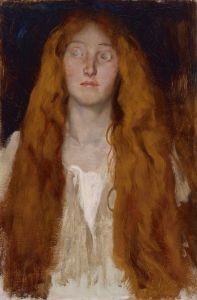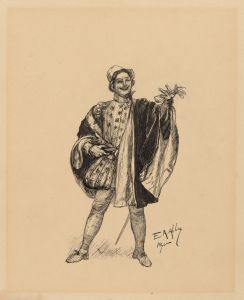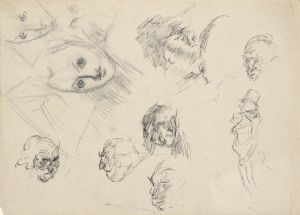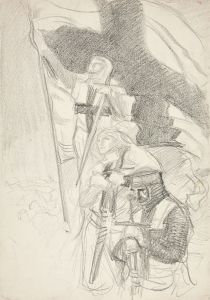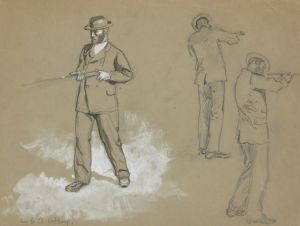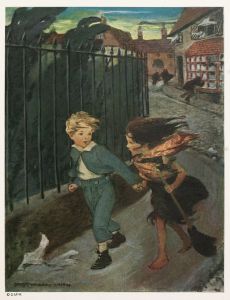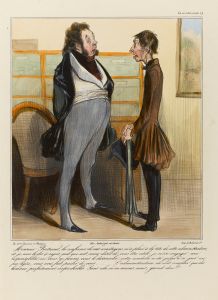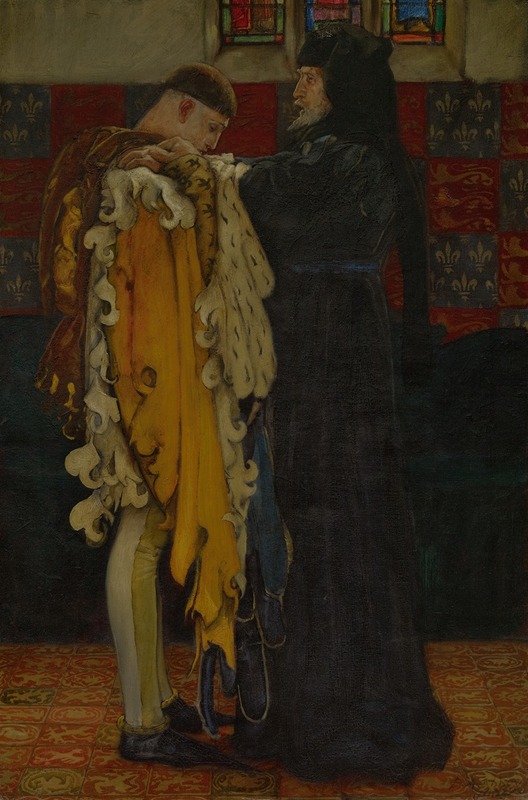
The King to the Prince of Wales: ‘Thou shalt have charge and sovereign trust herein,” King Henry IV, Part I, Act III, Scene II
A hand-painted replica of Edwin Austin Abbey’s masterpiece The King to the Prince of Wales: ‘Thou shalt have charge and sovereign trust herein,” King Henry IV, Part I, Act III, Scene II, meticulously crafted by professional artists to capture the true essence of the original. Each piece is created with museum-quality canvas and rare mineral pigments, carefully painted by experienced artists with delicate brushstrokes and rich, layered colors to perfectly recreate the texture of the original artwork. Unlike machine-printed reproductions, this hand-painted version brings the painting to life, infused with the artist’s emotions and skill in every stroke. Whether for personal collection or home decoration, it instantly elevates the artistic atmosphere of any space.
Edwin Austin Abbey's painting "The King to the Prince of Wales: ‘Thou shalt have charge and sovereign trust herein,’ King Henry IV, Part I, Act III, Scene II" is a notable work that captures a pivotal moment from William Shakespeare's historical play "Henry IV, Part I." Abbey, an American artist renowned for his illustrations and paintings inspired by literature, created this artwork as part of his series of Shakespearean scenes.
The painting depicts a significant scene between King Henry IV and his son, Prince Hal, who later becomes King Henry V. In Act III, Scene II of the play, King Henry IV confronts Prince Hal about his irresponsible behavior and lack of princely decorum. The king expresses his disappointment and concern over Hal's association with disreputable characters, fearing it might undermine the stability of the kingdom. In this moment, King Henry IV entrusts his son with greater responsibility, hoping to inspire him to fulfill his royal duties.
Abbey's interpretation of this scene is characterized by his attention to historical detail and dramatic composition. He meticulously researched the period's costumes and settings to ensure authenticity in his depiction. The painting captures the tension and emotional gravity of the exchange between father and son, highlighting the themes of duty, honor, and redemption that are central to Shakespeare's play.
Edwin Austin Abbey was born in 1852 in Philadelphia, Pennsylvania. He gained prominence as an illustrator for magazines such as Harper's Weekly before moving to England, where he spent much of his career. Abbey's fascination with Shakespearean subjects was a significant aspect of his artistic output, and he became well-known for his ability to bring literary scenes to life through his paintings.
The painting is part of a larger body of work by Abbey that includes illustrations and murals, many of which are housed in prestigious institutions. Abbey's contributions to the arts were recognized during his lifetime, and he was elected to the Royal Academy of Arts in London. His work continues to be celebrated for its narrative quality and historical accuracy.
"King Henry IV, Part I" is one of Shakespeare's history plays, believed to have been written around 1596-1597. It is part of a tetralogy that also includes "Richard II," "Henry IV, Part II," and "Henry V." The play explores the themes of power, legitimacy, and the complexities of father-son relationships, making it a rich source of inspiration for artists like Abbey.
Abbey's painting serves as a visual interpretation of Shakespeare's text, offering viewers a glimpse into the dramatic and emotional world of the play. Through his art, Abbey invites audiences to engage with the timeless themes and characters that have made Shakespeare's works enduringly popular.





